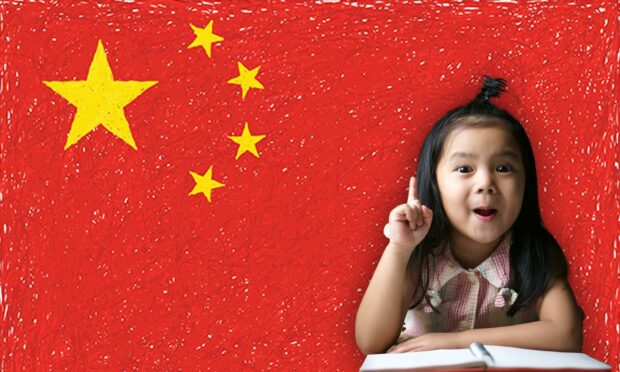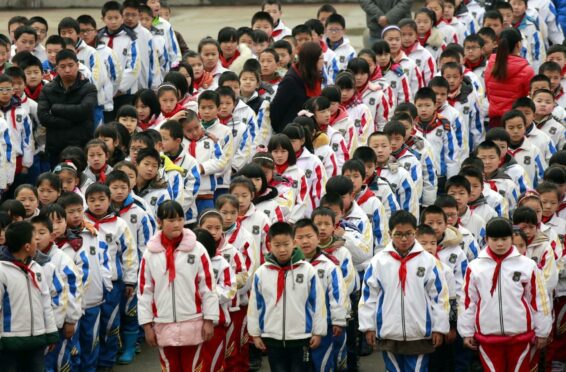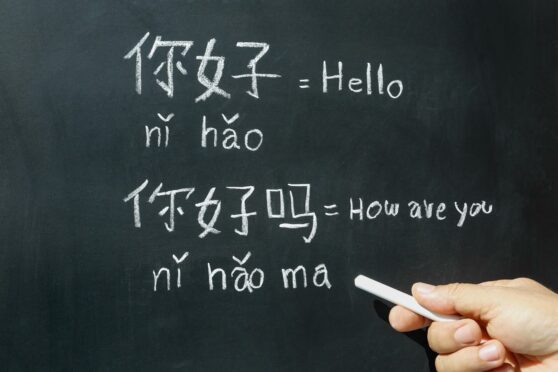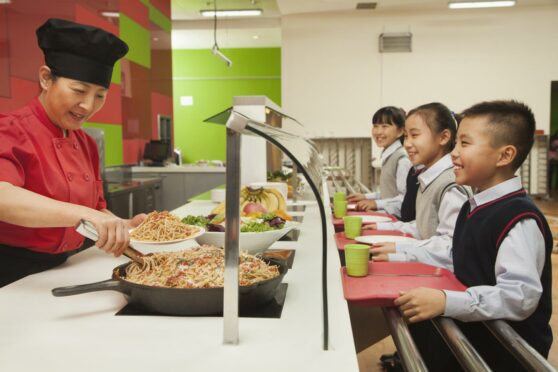Straight-talking teachers, a clear curriculum, and an inherent desire to succeed.
Could this be why China produces the world’s highest-achieving school pupils?
Education systems across the world are judged by the Pisa (Programme for International Student Assessment) tests, with results released every three years.
Pisa measures 15-year-olds’ ability to use their reading, maths and science knowledge and skills to meet real-life challenges.
The tests are taken by pupils in 79 countries and regions worldwide.
Scotland recorded its worst-ever performance in maths and science in the most recent Pisa tests, ranked 25th and 24th among OECD nations.
Reading offered a rosier picture, with Scotland ranked above Wales and Northern Ireland, though slightly below England.
Scotland plummeting while China soars
It achieved a mean score of 504 for reading (China = 555); 489 for maths (China = 591); and 490 for science (China = 590).
Scotland’s education system came in for criticism in an OECD report in June, leading the Scottish Government to scrap the SQA.
Meanwhile, China ranked first across the globe in reading, maths and science.
The world’s most populous country (1.4bn people), its pupils are outperforming even Europe’s best – in Finland and Estonia.
As with most countries, basic education in China includes pre-school education (normally three years), primary education (six years, usually starting at the age of six) and secondary education (six years).
The school year is divided into two terms: February to mid-July (six weeks summer holiday) and September to mid/late-January (four weeks winter holiday). There are no half-term holidays.
A major point of difference, however, is the length of the school day.
Most schools start from early morning (about 7.30am) and finish early evening (about 6pm), with a two-hour lunch break.
Many schools have evening self-study classes running from 7pm to 9pm so students can finish their homework and prepare for tests.
If schools do not run self-study evening classes, students still have to do their homework at home, often up to 10pm.
Due to fierce competitiveness to get into good universities, the pressure to do well is intense.
‘Big population means more competition’
Violet Li, 40, is originally from Quanzhou but has lived in Aberdeen for 17 years.
With her husband Cammy and children Li, 11, and Aaron, 10 in tow, she is currently on a year-long sabbatical.
Previously a public health officer and piano teacher, she and her teacher husband are home-schooling Li and Aaron, who previously went to Elrick School in Westhill.
They are using the year out to see as many countries as they can, and are currently in Serbia.
“A big population means more competition,” said Violet.
“In order to get a better life and career, you need to do well in school, especially in rural areas.
“We don’t have the same welfare system as Scotland or Finland.
“If you don’t have a job, you don’t get looked after by the government in the same way you would in these countries.
“So you have to work hard to ensure that you and your family have a good living standard.
“In China, it’s almost a failure if you don’t go to university. It’s a cultural thing – you have to do well in school.”
As with other educational success stories like Singapore and Finland, China is reaping the benefits of its government prioritising education.
“With the economic boom, there are more resources,” said Violet.
“That’s always the key behind a lot of things. As Deng Xiaoping [former Chinese leader] said, if you develop the economy first, everything else will follow.
“I’m sure in 10 years’ time, Chinese football will be a lot better. Because now that is considered important, and money’s going into that. It was the same with education.”
Open teachers, frank discussions
Chinese teachers communicate openly and frankly about a child’s progress. Pupils have their rankings published for others to see. And parents are kept fully aware of their child’s progress, whether flattering or not.
The idea is not only to foster competitiveness, but give parents the chance to intervene when their child is struggling.
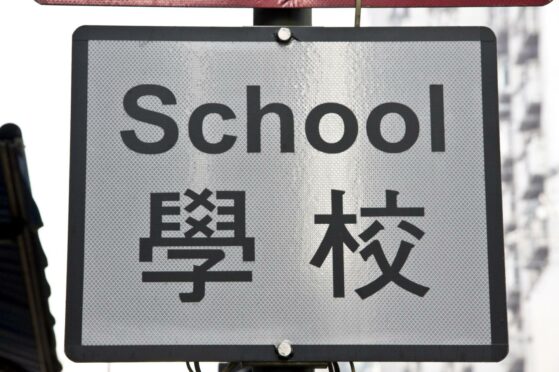
“In Scotland it can be very hard to find out if your child is doing well in school or not,” said Violet.
“The teachers tend to be very careful what they write in the end-of-term report.
“In China you have your rankings published in black and white for everyone to see. It’s perhaps cruel, but it’s effective.
“In Scotland, things have changed. Years ago, things like telling parents their child isn’t doing well would have been a fairly straightforward thing.
“Now you have to be careful, you have to be mindful of the child’s and parents’ feelings or you could get into trouble. I find that quite extreme.”
Another problem Violet points to, at primary level, is having one teacher for an entire class.
She feels that in Scotland too much of the teacher’s time is taken up with the pupils who are struggling, which limits the learning of other pupils.
“It means the ones that do well don’t get pushed,” she said.
“And the ones not doing so well get some help, but possibly not enough because you only have one teacher in the class.
“Also the fact that that teacher teaches every single thing – that always amazes me.
“In China you need a degree in maths to be able to teach maths. I think if you’re teaching a subject, even at the fundamental level, you should have studied it.”
‘We are experts after finishing school’
Core subjects such as maths are studied in great depth.
“We are almost maths experts when we finish school,” said Violet. “But most of it we need.
“Maybe that helps with our further education, it certainly gives us logical thinking.
“At the moment I’m giving my children maths from the P3 curriculum in China, when they’re P6 and P7. So it’s a big, big difference there.”
As far as language learning is concerned, Violet pointed out the inconsistency in French teaching in Scottish primary schools.
“Very few people speak a second language in Scotland,” said Violet.
“I can see why from my children’s education in primary school.
“When you have a French teacher, you learn French. But then the next term you can’t find a French teacher, so you learn something else.
“In China, we now start learning English from nursery. And that’s every day, every term, not on and off. So teacher resources is a big problem in Scotland.”
This was echoed by another Chinese expat the Press & Journal spoke to.
A university lecturer, originally from Henan province in China, she lives in Balmedie with her husband and two children, aged 14 and 10.
She said: “My son started learning French in P1, counting numbers. And then suddenly there was no French teacher. Later they started learning French again, but then again there was no teacher.
“The process repeated, and now he’s P6 and still only counting one to 20.”
The Scottish Government has begun implementing its 1+2 Languages initiative, which it hopes will revolutionise foreign language learning in schools.
‘If there’s no textbook, how do you learn?’
Violet added: “A clearer curriculum would be helpful.
“We’ve been trying to find out what we need to teach our kids this year while we’re away, and it’s very vague.
“The Scottish curriculum seems to be more about personality development, and lots of loose things you can’t really measure with exams.
“Another thing is that there’s no textbook in school.
“My dad always asks: ‘If you don’t have a textbook, how do you learn?’
“I think a textbook serves as a kind of curriculum you can follow.
“So if you have a French textbook but not a French teacher, at least you can follow the textbook to keep the children on track. I think in time that needs to be changed.”
The Balmedie woman echoed a number of Violet’s points, particularly Chinese pupils’ drive to succeed.
But she also emphasised the benefit of learning core subjects in depth, rather than a curriculum that is broad but light.
“At university level, most parents will have a chat with their children and encourage them to choose something that will help them find a job,” she said.
“That is the priority. That’s the background, that’s the culture.
“It would be nice to choose something you enjoy, but you do need to be able to contribute back to society.
“They say higher education in Scotland is free. Well, it’s not, because the taxpayer is paying for you.
“So when a student doesn’t turn up to one of my classes, they’re wasting the money of taxpayers who are paying for them to do their course.
“In China you pay for your own education, so I think people value it more. There, students turn up for class.
“So maybe the government in Scotland does too much, I don’t know.”
Specialized teachers, greater depth
She added: “There’s no doubt Chinese kids are under more pressure, and they do study more.
“And subjects are taught in greater depth, particularly literacy and numeracy, and perhaps IT as well.
“They’re taught by specialized teachers too, rather than one teacher for everything.
“So although there are cultural elements to the comparison between Scottish and Chinese schools, I think the curriculum itself can make a difference.
“Scotland was doing so well previously, and then they changed the curriculum and things went downhill.
“Even if you compare the Scottish curriculum with England, it’s quite light.
“However, what I like about the Scottish system is that pupils do different projects and talk about politics and social issues from a young age. That’s really good – I don’t think Chinese pupils get the same opportunities.”
While there are lessons to be learned from the world’s most successful education system, China and Scotland are ultimately two very different countries.
“The culture of these two countries is so different,” said Violet.
“Yes, perhaps there is more respect for education in China.
“But that’s a cultural thing and a difficult thing to change. You can’t just tell people to respect something more. It’s easy to talk about but harder to implement.
“You could tell Chinese kids they should learn from Scottish kids. But you couldn’t tell Scottish kids they should learn from Chinese kids.
“A Chinese pupil will be told what to do and do it. A Scottish pupil might challenge the teacher.
“That’s a cultural difference and not something you can change overnight.”
More from the Schools and Family team
First Class: Primary 1 photos from schools across the north and north-east
Spikkin Scandinavian: The similarity between Scots and Nordic tongues
